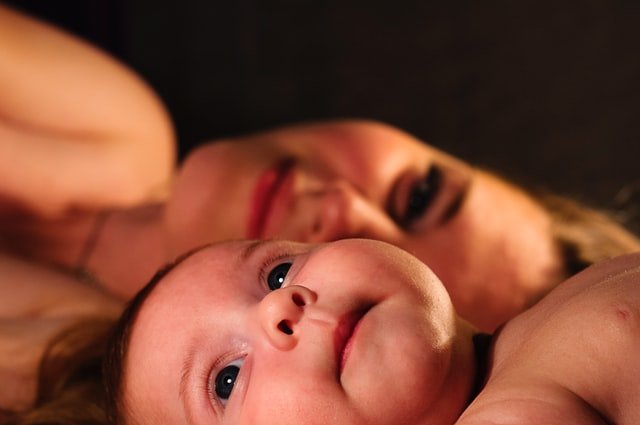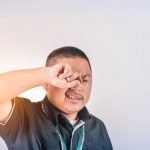
Neurodermatitis is a chronic skin disease from the group of atopic diseases. Homeopathic medicines can often achieve amazing results, especially in children.
Along with conventional medicine, homeopathic treatment is one of the most commonly used therapies for neurodermatitis. Studies show that homeopathy can significantly improve or even stop the skin disease, especially in children. Homeopathic treatment should always be administered and supervised by a trained homeopath.
What is neurodermatitis?
Atopic dermatitis is a chronic inflammatory skin disease associated with itching, also known as atopic dermatitis and atopic eczema. Atopic dermatitis is not contagious and usually progresses in phases. Central components of the disease are a disturbed barrier function of the skin and an overreaction of the immune system.
The exact causes of atopic dermatitis are still not entirely clear. Often there is a hereditary predisposition. In general, the probability of a child developing an atopic condition is around 30 percent if one of the parents has neurodermatitis, asthma or hay fever.
What ultimately triggers or worsens the disease in the child depends on various factors. The individual sensitivity of the organism and triggers (initiating factors) play a role. Triggers can come from inside the body or be brought to the body from outside. Typical triggers for neurodermatitis are:
- Stress, stressful situations
- Climate (especially autumn and winter)
- certain foods
- infections
- Irritants (such as soap, cosmetics)
- Clothing that causes itching
- mechanically stressful or heavily polluting activities
- tobacco smoke, fragrances
- Allergens (airborne allergens, food, contact allergens)
- Scratch
The conventional therapy consists of the administration of antihistamines, cortisone and immunosuppressants. This can suppress and temporarily alleviate the symptoms of neurodermatitis and prevent the disease from progressing.
Aim of homeopathy in neurodermatitis
As with all chronic diseases, the aim of homeopathic treatment for neurodermatitis is to achieve healing by activating the person’s self-healing powers.
For this purpose, a detailed patient survey (anamnesis) must bring to light those symptoms that are characteristic of the person concerned. These symptoms then lead to the selection of the homeopathic remedy. This not only treats the external, visible symptoms, but also the internal triggers of neurodermatitis. According to homeopathic understanding, the successful treatment of what is actually an internal disorder leads to the disappearance of the skin symptoms.
A so-called constitutional therapy of chronic diseases requires patience on the part of therapists and those affected. If children suffer from neurodermatitis, the parents are usually also heavily burdened. An effective and lasting healing process takes time and the drug often has to be changed and adapted to the current symptoms during the course of treatment.
The anamnesis: symptoms and choice of remedy
The following factors determine the choice of medication for neurodermatitis:
- What does the rash look like? The skin symptoms are assessed in terms of their condition (e.g. dry, weeping, purulent) and shape (blisters, pustules, crusts, cracks, scales).
- What are the sensations, how does the rash feel (painful, itchy, or burning)?
- Which factors originally triggered neurodermatitis or often lead to new flare-ups? In particular, acute illnesses or pronounced mental stress come into question here.
- What can acutely worsen or improve the rash?
- Which holistic changes and general symptoms (including the mood) have been shown with the onset of neurodermatitis? This includes appetite, menstruation, sleep, temperature perception, mental performance, behavior, mood and more.
- Are there any symptoms outside of the skin that accompany an atopic dermatitis flare-up?
- Does the rash alternate with other manifestations (e.g., does the rash come and go with asthma)?
- On which parts of the body do the rashes appear and where do they spread?
The homeopathic treatment of neurodermatitis
After taking the medical history, the homeopath will choose a single remedy that covers the crucial symptoms of the sufferer. This remedy can be prescribed in the form of globules (D and C potencies) and homeopathic drops (Q or LM potencies). Homeopathic remedies are also available as tablets, ointments and injection solutions. Most of the time these are complex drugs. However, homeopathy for neurodermatitis is carried out according to the classic method with individual remedies; treatment with complex remedies can alleviate the acute skin rash.
In principle, children and adolescents respond particularly well to homeopathy for neurodermatitis and the chances of success are significantly better than in adults. Homeopathy can often achieve rapid success with neurodermatitis in children and babies, but more patience and perseverance are usually required when treating adults.
It is impossible to predict how long homeopathic treatment will last. The aim of the treatment is the lasting freedom from symptoms, which often occurs surprisingly quickly, especially in babies and small children. Once this has been achieved, the treatment can be stopped. If symptoms reappear in the course of life, they are generally much milder and can be treated well. In adults, treatment is more lengthy and complete asymptomatic is more difficult to achieve.
Why is neurodermatitis not suitable for homeopathic self-medication?
Chronic skin diseases such as neurodermatitis should not be treated homeopathically by those affected themselves. There are two reasons.
- Excessively high potencies or too frequent intake of homeopathic medicines can lead to serious initial aggravations.
- According to the ideas of classical homeopathy, healing through homeopathic treatment proceeds from top (head) to bottom (feet), from inside (organs) to outside (skin) and in the reverse order of the occurrence of the symptoms of the disease. Therefore, with a classic homeopathic treatment, the skin rash will always disappear as the last symptom of the disease. Conversely, suppressing a skin symptom can lead to disease manifesting in the internal organs. Poorly chosen homeopathic remedies can lead to the skin rash of neurodermatitis improving, but showing a different atopic disease. This is often bronchial asthma. These processes are also known in conventional medicine and are referred to there as changing floors.
Homeopathy for neurodermatitis: study results
The results of studies that deal with the success of homeopathic treatment of neurodermatitis show different results.
- A study clearly shows the effectiveness of homeopathy for neurodermatitis and other chronic diseases. Almost 4,000 adults and children with chronic diseases (most common diagnoses: atopic dermatitis in children, allergic rhinitis in men and headaches in women) were treated with classical homeopathic medicine for two years. There was a significant improvement in the quality of life and a reduction in the number of medications taken by the subjects.
- The results of a comparative study that dealt with the benefits, costs and safety of homeopathic treatment in 99 children with neurodermatitis. As a result, the homeopathic therapy worked just as well as the conventional treatment and both methods were also equal in terms of side effects. However, homeopathic therapy was significantly more expensive due to higher medical costs due to the close contact between patients and doctors.
- As part of a long-term study, 325 children with an atopic disease were observed. The results show a significant improvement in the relevant symptoms of the disease in 75.8 percent of the cases. Children with neurodermatitis and hay fever showed better results than children with asthma. In a long-term analysis of 107 patients, all symptoms had disappeared in 70.1 percent of the children after five to ten years. In particular, it was the children with neurodermatitis who benefited the most from homeopathic therapy with a healing rate of 84.2 percent. 40 percent of the children who had two or three atopic diseases in the initial examination were completely symptom-free at the end of the follow-up period.
- A randomized, placebo-controlled, double-blind study, which was carried out in a group of 24 subjects with neurodermatitis, produced completely different results. In the course of the 32-week study, the homeopathic medicines showed no effect that went beyond the placebo effect.
What else helps with neurodermatitis?
Conventional medical or homeopathic treatment can often be effectively supported:
- Skin care is of particular importance. There are care products that are especially suitable for neurodermatitis skin. In addition to moisturizing ingredients, anti-inflammatory and regeneration-promoting substances are often processed.
- A cool, damp compress often helps with acute itching.
- Vegetable oils with omega-6 fatty acids have a healing and anti-inflammatory effect. Oils such as argan oil, evening primrose oil, black cumin oil and borage seed oil are used in ointments and creams, but can also be applied as an oil or taken in capsule form.
- Aloe vera has a cooling, anti-inflammatory and healing effect.
- Envelopes with a decoction of chamomile flowers can have an anti-inflammatory effect. However, many neurodermatitis sufferers are allergic to chamomile.
- Strong black tea poultices can reduce itching and dry up moist skin rashes.
Can you prevent neurodermatitis?
A few approaches are available to reduce the risk of neurodermatitis in children from high-risk families:
- The “Allergy Prevention” guideline recommends that mothers with a family history of the disease breastfeed their child exclusively for four months. If this is not possible, hypoallergenic milk should be fed.
- The start of complementary feeding should begin between the fourth and sixth month of life.
- Regular creaming of the skin from birth is said to have a slightly preventive effect.
- Expectant mothers should refrain from smoking and later at-risk children should grow up in a smoke-free environment.
If, on the other hand, neurodermatitis already exists, the following measures can help to prevent acute flare-ups:
- If allergies are proven, the triggering allergens should be avoided as far as possible.
- Neurodermatitis sufferers should not expose themselves to tobacco smoke.
- Do not overheat living and working rooms: The room temperature should not rise above 20 °C during the day, 18 °C is sufficient for sleeping.
- Special products for neurodermatitis skin should be used for skin care. Antibacterial wash lotions or creams with antiseptic additives can reduce skin inflammation.
- Long, hot baths or very long showers should be avoided.
- Airy, breathable clothing made of cotton, silk or linen is best suited for neurodermatitis sufferers. Clothing made from sheep’s wool, on the other hand, is usually badly tolerated.
- Special neurodermatitis suits can prevent unconscious scratching in babies and small children.
- Long-term stays in a stimulating climate (North Sea, high mountains) can prevent relapses and improve the complexion.






